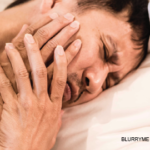Among cancer patients, the epidemiology of BRONJ has been well defined. Large epidemiologic studies with careful follow-up and structured dental questionnaires and/or examinations have described an incidence of BRONJ ranging from 2% to 11%.3 Risk factors for BRONJ among cancer patients appear to be the concomitant use of glucocorticoids as well as several chemotherapies. Recent dental extractions strongly associate with BRONJ. However, the epidemiology of BRONJ among osteoporosis patients is much less clear.
Several sources suggest that the incidence of BRONJ among patients using these agents for osteoporosis is between 1 in 10,000 and 1 in 100,000.4 This estimate is based on sparse data, including the lack of BRONJ observed in randomized controlled trials with oral bisphosphonates. This number may be an underestimate because most trials did not formally assess for oral lesions. In fact, a postal survey conducted in Australia found a rate of BRONJ among oral bisphosphonate users between 0.01% and 0.04%. Rates increased 10-fold among persons with recent dental extractions.5
This more recent study by Sedghizadeh et al reported an even higher risk. Investigators at the USC dental school clinic collected a sample with all oral bisphosphonate users (n=208) and found nine cases of ONJ. None of the cases was referred to the clinic for ONJ, and all were at least stage 2 or 3 (painful or infected site of exposed bone). All cases of BRONJ occurred after a simple tooth extraction or denture trauma and all cases were among older women. No case occurred prior to 12 months of bisphosphonate exposure.
There were several limitations to the study by Sedghizadeh and colleagues. The dental school clinic population may not be representative of a typical population using bisphosphonates. The authors give us no information about the total source population. Also, the authors do not calculate the rate of ONJ among patients not using bisphosphonates. Thus, it is difficult to know whether the source population was uniquely at risk for ONJ.
Despite these potential limitations, the calculated rate of BRONJ of 4% is many times higher than other estimates. While it seems unlikely that the rate is actually this high, it is also likely that initial estimates of 1 per 100,000 were too low. However, without large well-conducted studies, there are no good estimates of the rates of BRONJ among osteoporosis patients. For now, it seems prudent to warn patients about this potential risk, to encourage them to have dental work prior to starting bisphosphonates, and then to include the oral cavity in one’s review of systems and physical examination of patients using bisphosphonates. If a patient needs dental work while on a bisphosphonate, they should have it done, but what to do with the bisphosphonate is unclear. The ASBMR task force noted that some experts suggest a period off of bisphosphonates before and after dental extractions.1 However, there are little actual data to guide decision making for such patients. As more patients have used bisphosphonates for longer periods, more cases of BRONJ are likely to surface. Based on potential toxicities and lack of clear benefit beyond five years, it may be prudent to limit bisphosphonate use to 60 months.

